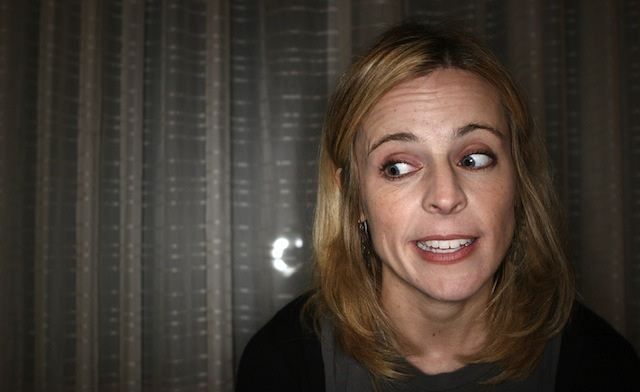May 21-25, 2012

“‘If you like Battlestar Galactica then you’ll love Outcasts!’ At least that’s what the producers of Outcasts are probably hoping you’ll say. Unfortunately at only 8 episodes long, Outcasts is a mere shadow of the show it aspires to be.” Read “From BSG to Outcasts: A guide to ripping off your favorite TV show in 5 easy steps” by Sarah Pavis.
“Funny thing, though. A couple of months after my first issue, Batman quit the League to form his own team, who would fight battles his more straight-laced friends refused. Then the Atom disappeared into the jungle. Green Lantern went into space and couldn’t commute back and forth on the weekends that easily, I guess. The Flash went on trial for murder, of all things. The team was slowly breaking apart. I’m not sure I really noticed until I went to grab the latest issue from the bottom rack at the grocery store one day, and there were all these new characters on the cover. Wait a minute. What’s going on here? I flipped to the inside spread and read: The End of the Justice League!” Read “My youth in a comic book Detroit” by Matt Santori-Griffith
The Gamers’ Club is playing Cave Story. Read “Power up” by Daniel J. Hogan, “The zig-zag world” by Gavin Craig, and “Nostalgia, celebration, and exploitation” by Kevin Nguyen.
“With Maria you get a cacophony of voices each one populating the world around and inside her. We hear her family, her friends, L.A. rich lady, Mexican neighbor, children at a youth center, the devil, baby Jesus (leaving messages on Mama Bamford’s answering machine), her childish self, her dark self, her anxious self, her feminist self. . . I could go on. Though one could lazily label her silly, just a weird voice lady, or as one radio deejay so inanely misread her, a “schizophrenic,” if you listen closely you might hear how her woman of a million voices act quite brilliantly sketches what it feels like to be Maria — to inhabit her skin, her space, her mind. And if we’re honest, we might find that all her “weird” characters, offbeat thoughts, songs and reactions are pretty familiar to our own experience.” Read “Keeping it weird: A night with Maria Bamford” by Ana Holguin.
“I rarely judge a book by its cover, but really, that is what the covers are for. The art can pull you in as much as the description of the story, and it’s the first thing you see when picking up a new book. At AWP I attended a talk about small presses and one of the authors said her favorite part of publishing with a small press was the control she had over the cover art. Her book was about a college-age woman who moved back to her hometown. It’s a coming-of-age novel and with a female protagonist it will appeal mostly to women. But the author wanted to at least try to get a few men to pick up the book. She had experience with large presses and knew they would put a close-up of a woman on the cover, probably with an out-of-focus field in the background and just as likely with her face out of the frame. That way all the women looking to buy the book will put themselves in the heroine’s place.” Read “Cover story” by Kelly Hannon.
“I normally sauté some zucchini in olive oil when I make honey-soy broiled salmon, but otherwise I have no idea what to do with it. I found a recipe for gnocchi with zucchini ribbons (?) and parley brown butter from eatingwell.com. I had no idea what zucchini ribbons were or how butter got brown, but it sounded pretty so I went with it.” Read “Butter, browned” by Jill Kolongowski.